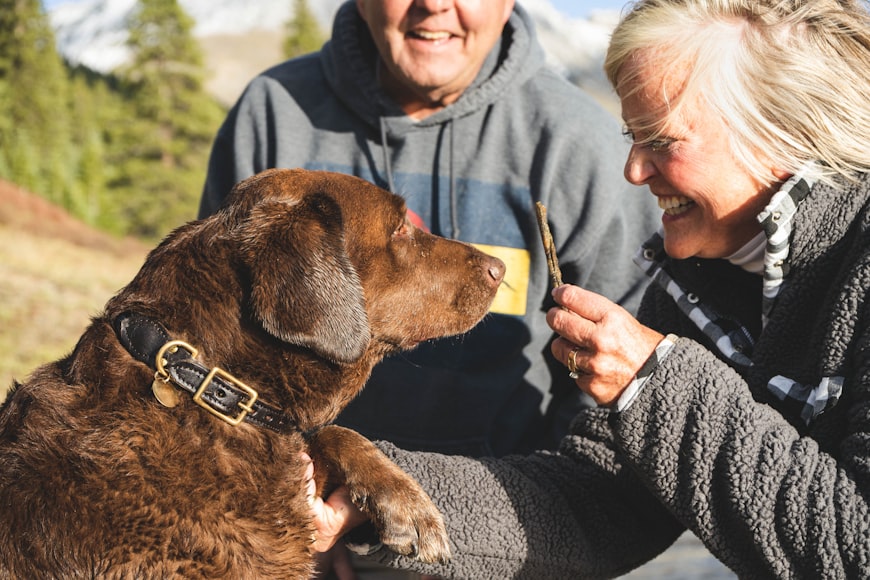Dog Oil for Coat: A Comprehensive Guide to Choosing and Using

Introduction
A lustrous, healthy coat is a testament to a dog’s overall well-being. Dog oil, a concentrated source of essential fatty acids, can significantly enhance the appearance and health of your furry friend’s coat. This comprehensive guide will demystify dog oil, guiding you in choosing the right product and maximizing its benefits.
Understanding Dog Oil
Dog oil is a natural supplement derived from various sources, such as fish (e.g., salmon, tuna), flaxseed, sunflower, and other plant-based oils. It contains a rich blend of omega-3, omega-6, and omega-9 fatty acids, which are essential for healthy skin and coat.
Benefits of Dog Oil for Coat
- Enhanced shine and luster: Omega fatty acids nourish the hair follicles, resulting in a glossy, vibrant coat.
- Reduced shedding: Oils provide moisture to the skin, reducing dryness and flaking that contribute to excessive shedding.
- Soothed skin: Oils have anti-inflammatory properties that can alleviate skin irritation caused by allergies, hot spots, or other skin conditions.
- Improved texture: Omega fatty acids strengthen the hair shaft, enhancing its elasticity and preventing breakage.
- Promoted hair growth: Omega fatty acids support healthy cell regeneration, fostering hair growth and reducing hair loss.
Choosing the Right Dog Oil
- Omega Balance: Look for oils that have a balanced ratio of omega-3 and omega-6 fatty acids. Omega-3s tend to be more beneficial for dogs with skin problems, while omega-6s promote coat health.
- Source: Choose oils derived from high-quality, sustainable sources. Wild-caught fish oils are often considered the best choice.
- Formulation: Consider the type of oil (liquid, capsule, or topical) that is most convenient and suitable for your dog.
- Ingredients: Ensure that the oil does not contain any harmful additives or fillers.
Using Dog Oil for Maximum Benefits
- Dosage: Follow the manufacturer’s recommended dosage guidelines based on your dog’s size and weight.
- Frequency: Most oils can be administered daily or several times per week.
- Administration: You can add oil directly to your dog’s food, give it as a treat, or apply it topically to dry areas of skin.
- Consistency: Use dog oil regularly to maintain optimal coat health.
Tips
- Introduce dog oil gradually into your dog’s diet to avoid digestive upset.
- Store dog oil in a cool, dark place to preserve its freshness.
- If your dog experiences any adverse reactions, discontinue use and consult with your veterinarian.
- Consider combining dog oil with other coat care products, such as shampoos and conditioners, for maximum results.
Conclusion
Dog oil is a powerful tool for enhancing the appearance and health of your furry friend’s coat. By choosing the right product and using it effectively, you can unlock the transformative benefits of this natural supplement. A lustrous, healthy coat is not only a joy to behold but also an indicator of a happy, well-nourished dog.
Benefits of Dog Oil for Coat

As a devoted dog pet blogger, the well-being of our furry companions holds paramount importance. Among the many aspects crucial to their health, a lustrous, healthy coat deserves special attention. Dog oil has emerged as a remarkable solution, bestowing an array of benefits that transform the appearance and well-being of our beloved pups.
Unleashing the Power of Dog Oil
Envision a silky, gleaming coat, soft to the touch and radiating vitality. Dog oil, a natural elixir extracted from various sources like fish, flaxseed, and coconut, holds the key to achieving this dream. Rich in essential fatty acids, vitamins, and minerals, this liquid gold works its magic to nourish and protect your dog’s skin and fur from within.
The Miraculous Benefits of Dog Oil for a Healthy Coat
1. Improved Skin Health:
Dog oil acts as a potent anti-inflammatory and antibacterial agent, effectively combating skin irritations and allergies that can mar your furry friend’s coat. It restores and maintains the skin’s natural moisture barrier, preventing dryness, flakiness, and hot spots.
2. Reduced Shedding:
The omega-3 fatty acids found abundantly in dog oil play a significant role in reducing excessive shedding. By nourishing the hair follicles and promoting healthy skin, dog oil strengthens the hair shafts, preventing breakage and minimizing the amount of loose hair floating around your home.
3. Shinier, Healthier-Looking Fur:
The essential fatty acids in dog oil work in concert to bestow upon your dog’s fur a radiant brilliance and a velvety softness. They nourish the hair from root to tip, enhancing its texture, sheen, and overall vitality.
4. Reduced Itching and Scratching:
Dog oil’s anti-inflammatory properties extend to soothing itchy, irritated skin, reducing the urge to scratch or bite. This not only brings relief to your dog but also prevents further damage to their skin and coat.
Choosing the Right Dog Oil: A Guide for Discerning Pet Owners
Selecting the optimal dog oil for your furry friend is paramount. Consider the following factors:
- Source: Opt for oils derived from reputable sources, ensuring they are pure and free from harmful contaminants.
- Ingredients: Verify that the oil contains high levels of omega-3 and omega-6 fatty acids, as well as essential vitamins and minerals.
- Dosage: Follow the manufacturer’s recommended dosage guidelines carefully to avoid overconsumption.
Incorporating Dog Oil into Your Pup’s Diet
Introducing dog oil into your dog’s diet is a simple yet highly impactful gesture. Here are some practical tips:
- Add to Food: Drizzle dog oil over your pup’s regular kibble or wet food.
- Direct Consumption: Administer dog oil directly into your dog’s mouth using an oral syringe or dropper.
- Treat Time: Use dog oil as a delectable reward for good behavior or training.
Consistency is key when using dog oil. Regular administration allows its beneficial effects to accumulate, resulting in a healthier, more radiant coat for your beloved dog.
The Bottom Line: Dog Oil, a Gift of Nature for Your Furry Friend
Incorporating dog oil into your dog’s routine is a simple but profound way to enhance their overall well-being. Its nourishing properties not only improve the appearance of your dog’s coat but also address underlying skin issues, reducing discomfort and promoting vitality. As dedicated pet bloggers, let us embrace the transformative power of dog oil and celebrate the beauty of healthy fur.
Types of Dog Oil

As devoted dog owners, we recognize the paramount importance of our canine companions’ overall well-being, including the health and appearance of their coats. A lustrous, healthy coat not only adds to their aesthetic appeal but also serves as an essential barrier against environmental stressors and helps regulate body temperature.
Among the myriad of grooming products available, dog oil has emerged as a multifaceted solution for enhancing coat health. Its natural ingredients provide a rich source of essential fatty acids and antioxidants that deeply nourish the skin and coat, promoting a radiant shine and a range of other benefits.
Delving into the World of Dog Oil: Types and Applications
Navigating the diverse world of dog oil can be overwhelming, but understanding the distinct qualities of each type empowers you to make informed choices for your furry friend. Here are the most prevalent types of dog oil:
1. Fish Oil: A Treasure Trove of Omega-3 Fatty Acids
Fish oil is a potent source of omega-3 fatty acids, particularly EPA (eicosapentaenoic acid) and DHA (docosahexaenoic acid). These essential fatty acids play a crucial role in maintaining skin and coat health. They reduce inflammation, support cell regeneration, and promote a strong immune system, thereby fostering a healthy, supple coat. Fish oil is ideal for dogs with dry, itchy skin, excessive shedding, or allergies.
2. Flaxseed Oil: A Versatile Source of Omega-3 and Omega-6 Fatty Acids
Flaxseed oil is extracted from flax seeds and contains a blend of omega-3 and omega-6 fatty acids. The ratio of these essential fatty acids is crucial for optimal skin and coat health. Flaxseed oil helps reduce inflammation, promote hair follicle health, and restore a lustrous shine to dull coats. It is particularly beneficial for dogs with skin allergies, dry skin, or hot spots.
3. Coconut Oil: A Bountiful Source of Lauric Acid
Coconut oil, derived from the meat of coconut, is a rich source of lauric acid, a medium-chain fatty acid. Lauric acid possesses antimicrobial and antifungal properties, making it effective in combating skin infections, yeast overgrowth, and hot spots. Coconut oil also penetrates deeply into the skin and coat, providing intense hydration and a healthy shine. It is ideal for dogs with dry, itchy skin, hot spots, or skin irritation.
4. Olive Oil: A Rich Reservoir of Oleic Acid
Olive oil, extracted from olives, is a potent source of oleic acid, a monounsaturated fatty acid. Oleic acid has skin-softening properties and is known to enhance the overall appearance of the coat. Olive oil helps maintain skin moisture, reduces inflammation, and protects against environmental stressors. It is a suitable choice for dogs with dry, flaky skin or those prone to sun damage.
Choosing the Perfect Dog Oil for Your Canine Companion
When selecting the ideal dog oil for your furry friend, consider their individual needs and preferences. Here are some guidelines to assist you:
- Dogs with dry, itchy skin may benefit from fish oil, flaxseed oil, or coconut oil.
- Dogs with skin allergies or sensitivities may respond well to fish oil or coconut oil.
- Dogs with dull or lackluster coats may find solace in fish oil, flaxseed oil, or olive oil.
- Dogs prone to skin infections or hot spots may thrive with coconut oil.
It is crucial to consult with your veterinarian before introducing any new supplements or treatments to your dog’s care regimen.
Dosage and Administration: Ensuring Optimal Benefits
The appropriate dosage of dog oil depends on the size of your dog and the specific oil used. Follow the manufacturer’s instructions carefully and consult with your veterinarian if you have any concerns.
Dog oil can be administered orally by mixing it into your dog’s food or giving it directly from a dropper. Alternatively, it can be applied topically by massaging it into your dog’s skin and coat.
Unleashing the Power of Dog Oil: A Multifaceted Approach to Canine Care
Incorporating dog oil into your dog’s grooming routine offers a comprehensive approach to enhancing their coat health. Its multifaceted benefits extend beyond mere aesthetics, promoting overall skin and well-being.
Regular use of dog oil can:
- Reduce inflammation and soothe irritated skin
- Promote healthy skin cell regeneration
- Enhance the strength and resilience of hair follicles
- Restore a lustrous shine to dull coats
- Protect against environmental stressors
- Support the immune system
Conclusion: Embracing the Transformative Power of Dog Oil
By harnessing the transformative power of dog oil, you can unlock a world of benefits for your canine companion’s coat health and overall well-being. With its rich blend of essential fatty acids, antioxidants, and antimicrobial properties, dog oil empowers you to provide your furry friend with a healthy, shiny, and radiant coat that reflects their inner vitality.
Choosing the Right Dog Oil

As a dog pet blogger, you understand the importance of maintaining your furry companion’s overall health and well-being. Essential to a dog’s appearance and overall health is their skin and coat. To keep it healthy and radiant, many pet owners turn to dog oil supplements. With so many options available, choosing the right oil for your dog’s specific needs can be overwhelming. This comprehensive guide will help you navigate the world of dog oils and make an informed decision that benefits your beloved pet.
Understanding Your Dog’s Needs
The first step in choosing the right dog oil is to consider your dog’s unique needs. Factors such as age, health, and skin condition play a crucial role in determining the most suitable oil. For instance:
-
Age: Puppies and older dogs have different nutritional requirements. Omega-3 fatty acids, for example, are particularly beneficial for puppies as they support brain and eye development.
-
Health: Dogs with specific health conditions, such as allergies or skin sensitivities, may require specialized oils that address their particular needs.
-
Skin Condition: Dogs with dry, itchy, or flaky skin can benefit from oils rich in essential fatty acids like Omega-3 and Omega-6, which help nourish and moisturize the skin.
Choosing a High-Quality Oil
Once you’ve assessed your dog’s needs, it’s time to select a high-quality oil. Look for products that meet the following criteria:
-
Essential Fatty Acids: Choose an oil that is a good source of essential fatty acids, particularly Omega-3 and Omega-6. These fatty acids are crucial for maintaining skin and coat health, as they cannot be synthesized by the dog’s body and must be obtained through diet.
-
Natural Ingredients: Opt for oils made from natural ingredients, avoiding those with added fillers or preservatives. These additives can be harmful to your dog and diminish the oil’s effectiveness.
-
Cold-Pressed: Cold-pressed oils are extracted without the use of heat, which preserves their nutritional value and antioxidants.
Popular Dog Oil Options
Some of the most popular dog oils on the market include:
-
Fish Oil: Rich in Omega-3 fatty acids, fish oil supports brain health, reduces inflammation, and improves skin and coat health.
-
Flaxseed Oil: A plant-based source of Omega-3 and Omega-6 fatty acids, flaxseed oil nourishes the skin, reduces shedding, and promotes a healthy, shiny coat.
-
Coconut Oil: Coconut oil contains lauric acid, which has antibacterial and antifungal properties. It also helps moisturize the skin and improve coat texture.
Dosage and Administration
The dosage of dog oil you should give your pet depends on their weight and individual needs. Generally, a small dog may require 1-2 teaspoons of oil per day, while a large dog may need up to 4 teaspoons. It’s always a good idea to start with a small amount and gradually increase the dosage as needed. You can add the oil to your dog’s food or water, or administer it directly into their mouth using a dropper.
Conclusion
Choosing the right dog oil can significantly improve your dog’s skin and coat health, leaving them with a healthier, more lustrous appearance. By considering your dog’s age, health, and skin condition, and opting for a high-quality oil with a good source of essential fatty acids, you can provide your furry friend with the nourishment their skin and coat need to thrive. Remember to follow the recommended dosage and consult with your veterinarian if you have any questions or concerns about using dog oil. With the right oil, you can help your dog maintain a healthy and radiant coat that reflects their vitality and well-being.
Dosage and Administration

As dedicated dog pet bloggers, we recognize the importance of maintaining a healthy and lustrous coat for our canine companions. Dog oil, derived from various natural sources, has emerged as a popular and effective solution to nourish and enhance fur quality. However, understanding the proper dosage and administration is crucial to ensure optimal benefits without unintended consequences.
Dosage Guidelines: Adhering to Manufacturer’s Instructions
The ideal dosage of dog oil varies depending on the specific product formulation, the weight of your dog, and its individual needs. To ensure accurate dosing, it is imperative to meticulously follow the guidelines provided by the manufacturer. These instructions are meticulously crafted to provide safe and effective usage, ensuring that your beloved pet receives the optimal amount of nourishment.
Gradual Introduction: Starting Small and Monitoring Response
When initiating dog oil supplementation, it is prudent to commence with a modest quantity and gradually augment the dosage as necessitated. This measured approach allows you to vigilantly monitor your dog’s response, detecting any potential sensitivities or adverse reactions. By closely observing your pet’s well-being, you can fine-tune the dosage to achieve the desired results while ensuring their comfort.
Versatile Administration: Food or Direct Ingestion
Dog oil offers the versatility of administration, catering to the specific preferences of both you and your canine friend. For fuss-free convenience, it can be effortlessly incorporated into your dog’s regular food. Alternatively, you can opt for direct administration into your dog’s mouth, providing an immediate and concentrated dose of nourishment. Choose the method that suits your dog’s temperament and makes the process enjoyable for both parties.
Additional Considerations: Ensuring Optimal Benefits
Beyond proper dosage and administration, several additional factors warrant consideration to maximize the benefits of dog oil:
-
Quality Matters: Opt for high-quality dog oil sourced from reputable manufacturers. Inferior products may lack the essential nutrients required to nourish your dog’s coat effectively.
-
Consistency is Key: Regular administration of dog oil is paramount to maintaining a healthy and lustrous coat. Establish a consistent schedule to ensure your pet receives the full extent of its benefits.
-
Dietary Balance: While dog oil provides essential nutrients for coat health, a well-balanced diet remains the cornerstone of your dog’s overall well-being. Consult with your veterinarian to determine the optimal nutritional plan for your furry companion.
Conclusion
Harnessing the power of dog oil for a glossy and healthy coat is a simple yet effective strategy for pet owners. By adhering to proper dosage guidelines, gradually introducing the supplement, and choosing a suitable administration method, you can embark on a journey towards enhanced fur quality and canine contentment. Always remember to consult with your veterinarian for personalized advice and to ensure that dog oil integration is right for your furry friend.
How Long Does it Take to See Results?
In the realm of dog grooming, few things are as coveted as a lustrous, healthy coat. While genetics play a significant role in a dog’s fur quality, external factors such as diet and environmental influences can take their toll. Dog oil for coat has emerged as a popular solution for enhancing a dog’s coat health and overall appearance. However, many pet owners are eager to know how long it takes to see visible results.
Understanding the Effects of Dog Oil for Coat
Dog oil for coat is typically a blend of essential oils and carrier oils that are rich in nutrients and antioxidants. These oils work by penetrating the skin and hair follicles, providing the necessary vitamins, minerals, and fatty acids that contribute to coat health.
- Essential Oils: Oils like lavender, rosemary, and tea tree oil have antibacterial, antifungal, and anti-inflammatory properties that soothe the skin, reduce itching, and promote healthy hair growth.
- Carrier Oils: Carrier oils like coconut oil, almond oil, and jojoba oil act as a base for the essential oils and help them penetrate the skin effectively. They also provide hydration and nourishment to the coat.
Timeline for Visible Results
Most dog owners can expect to see visible improvements in their dog’s coat within a few weeks of consistent application. The exact timeframe can vary depending on factors such as the dog’s age, breed, overall health, and the severity of any existing coat issues.
- Within 2-4 Weeks: Many dogs start to show noticeable changes within 2-4 weeks of using dog oil for coat. The coat may become noticeably shinier, smoother, and healthier-looking.
- 4-8 Weeks: As the oil continues to nourish and repair the coat, further improvements become apparent. The hair may become thicker, fuller, and less prone to breakage.
- 8 Weeks or More: For some dogs, it may take up to 8 weeks or more to achieve optimal results. This is especially true for dogs with severely damaged or neglected coats.
Tips for Consistency
Consistency is key when it comes to using dog oil for coat. The best way to ensure visible results is to apply the oil regularly, as directed on the product packaging.
- Establish a Regular Routine: Choose a specific time each week to apply the oil, such as after a bath or during a grooming session.
- Massage the Oil In: Gently massage the oil into the coat, ensuring that it reaches the skin and hair follicles.
- Avoid Over-Application: While consistency is important, over-applying the oil can lead to greasy or weighed-down hair.
- Monitor Progress: Observe your dog’s coat for any changes in texture, shine, or overall health. Adjust the frequency or amount of oil used as needed.
Conclusion
Dog oil for coat can be a powerful tool for enhancing a dog’s coat health and appearance. While visible results may vary based on individual factors, most dogs can expect to see improvements within a few weeks of consistent application. By establishing a regular routine and paying attention to your dog’s coat condition, you can help them achieve the lustrous, healthy coat they deserve.
Potential Side Effects
As dog owners, we’re always seeking ways to enhance our furry companions’ well-being. Dog oil is a popular choice for promoting a shiny, healthy coat, but it’s essential to be aware of its potential side effects to ensure safe usage.
What is Dog Oil?
Dog oil is a dietary supplement derived from various sources, including fish, flaxseed, and olive oil. It’s rich in omega-3 and omega-6 fatty acids, which are essential for skin and coat health, supporting cell growth, reducing inflammation, and enhancing moisture retention.
Benefits of Dog Oil for Coat
Regular administration of dog oil can lead to noticeable improvements in a dog’s coat:
- Shiny and lustrous coat: Omega fatty acids nourish the hair follicles, resulting in a healthy glow.
- Reduced shedding: The anti-inflammatory properties of dog oil soothe irritated skin, minimizing shedding.
- Improved skin health: Dog oil contains antioxidants that protect the skin from environmental stressors and soothe conditions like allergies and eczema.
- Reduced hot spots and itching: The anti-inflammatory properties of dog oil alleviate skin irritation and discomfort.
Potential Side Effects
While dog oil is generally safe when used in moderation, there are a few potential side effects to consider:
1. Diarrhea or Vomiting
Excessive doses of dog oil can overload the digestive system, causing diarrhea or vomiting. It’s crucial to administer dog oil as directed by your veterinarian to avoid digestive upset.
2. Allergies
Allergies to dog oil are rare but can occur in some dogs. If your dog experiences symptoms such as hives, itching, or swelling after consuming dog oil, discontinue use and consult a veterinarian.
How to Avoid Side Effects
To minimize the risk of side effects, follow these guidelines:
- Start with a small dose: Gradually increase the dosage over time to give your dog’s system a chance to adjust.
- Choose high-quality oil: Opt for dog oil derived from reputable sources and certified for purity and quality.
- Follow veterinarian recommendations: Consult your veterinarian before giving dog oil to your pet. They can advise on the appropriate dosage and identify any potential contraindications.
- Monitor your dog: Pay attention to any changes in your dog’s health or behavior after starting dog oil supplementation. If you notice any adverse reactions, discontinue use and contact your veterinarian.
Safe Usage Tips
To ensure safe and effective use of dog oil, consider the following tips:
- Use as a supplement: Dog oil should complement a balanced diet and not replace it.
- Avoid overdosing: Follow dosage instructions carefully to prevent digestive upset and other side effects.
- Store properly: Keep dog oil in a cool, dark place to maintain its freshness and potency.
- Consider external use: Dog oil can be applied topically to soothe skin irritations and promote healthy coat growth.
- Combine with other supplements: Consult your veterinarian about combining dog oil with other supplements, such as probiotics or joint supplements, to support your dog’s overall well-being.
Conclusion
Dog oil can provide numerous benefits for your pet’s coat, but it’s crucial to be aware of the potential side effects and practice safe usage. By following the guidelines outlined above, you can harness the benefits of dog oil while minimizing the risk of adverse reactions. Always consult your veterinarian before administering any supplements to your dog to ensure their safety and well-being.
Storing Dog Oil
As a dedicated dog pet blogger, you’re well aware of the transformative power of dog oil for maintaining a healthy, lustrous coat. To ensure that your readers reap the full benefits of this canine elixir, it’s crucial to guide them on the proper storage techniques to preserve its potency.
Storage Guidelines: The Key to Preserving Dog Oil’s Efficacy
-
Cool and Dark Haven: Dog oil should reside in a cool, dark environment, away from direct sunlight and heat sources. Excessive heat can degrade the oil’s delicate nutrients and active compounds, diminishing its effectiveness.
-
Refrigeration for Extended Shelf Life: Once the oil bottle has been opened, refrigeration is the optimal storage method to extend its shelf life. The cold temperatures create a protective barrier against oxidation and spoilage, preserving the oil’s integrity for up to several months.
Additional Tips for Optimal Storage
-
Airtight Container: Transfer the dog oil to an opaque, airtight container to minimize exposure to light and air. This prevents oxidation, which can compromise the oil’s stability and quality.
-
Small Batches: Purchase dog oil in smaller quantities to ensure freshness. Large containers may take longer to deplete, increasing the risk of oxidation.
-
Avoid Contact with Moisture: Keep dog oil away from moisture to prevent bacterial contamination. Use a clean, dry spoon or dropper to extract the desired amount.
-
Monitor Appearance and Smell: Periodically inspect the dog oil for any changes in appearance or smell. If you notice any discoloration, cloudiness, or an off odor, discard the oil immediately.
Benefits of Proper Storage: A Healthy Coat and Happy Dog
-
Preserves Nutritional Value: Proper storage ensures that the essential fatty acids, vitamins, and antioxidants in dog oil retain their potency. These nutrients contribute to a healthy coat, vibrant skin, and overall well-being.
-
Extends Shelf Life: Refrigeration significantly extends the shelf life of dog oil, allowing you to enjoy its benefits for a longer period.
-
Reduces Spoilage: Cool, dark storage inhibits bacterial growth, minimizing the risk of spoilage and ensuring the oil’s safety for your furry companion.
Conclusion: The Power of Proper Storage
Storing dog oil properly is paramount to maintaining its effectiveness and ensuring your dog’s health and happiness. By following these expert guidelines, you can preserve the oil’s potency, extend its shelf life, and contribute to a radiant coat and overall well-being for your beloved canine friend.
Tips for Using Dog Oil
Dog oil has become an increasingly popular addition to pet care routines, offering a range of benefits for your furry companion’s health and happiness. From silky coats to reduced inflammation, dog oil can enhance your dog’s overall well-being. Here’s a comprehensive guide to using dog oil effectively:
Benefits of Dog Oil for Your Dog’s Coat
Dog oil is rich in essential fatty acids, vitamins, and minerals that are crucial for maintaining a healthy and lustrous coat. These nutrients nourish the skin and hair follicles, promoting:
- Silky, shiny fur
- Reduced shedding and tangles
- Prevention of dandruff and dry skin
- Improved skin elasticity and hydration
Choosing the Right Dog Oil
When selecting dog oil, opt for high-quality products that are specifically formulated for canines. The oil should contain a blend of essential fatty acids, such as omega-3 and omega-6, as well as other nutrients that support skin and coat health. Avoid using human oils, as they may contain ingredients that are harmful to dogs.
Methods of Application
There are several ways to incorporate dog oil into your dog’s care routine:
- Bath Time Treat: Add a few drops of dog oil to your dog’s bathwater for a soothing spa experience. The oil will gently cleanse and nourish their skin and coat, leaving it soft and manageable.
- Massage Oil Magic: Use dog oil as a massage oil to relax your dog while promoting healthy skin. Gently massage the oil into your dog’s skin, allowing it to absorb and improve circulation.
- Food Supplement: Add a small amount of dog oil to your dog’s food to provide them with essential fatty acids and other nutrients from within. This is a convenient way to ensure they receive the benefits of dog oil on a regular basis.
Frequency of Use
The frequency of dog oil use will depend on your dog’s individual needs and skin condition. For general maintenance, apply dog oil once or twice a week. For dogs with dry or sensitive skin, you may need to apply oil more frequently.
Safety Precautions
While dog oil is generally safe, it’s important to follow these precautions:
- Avoid using dog oil on puppies under 6 months of age.
- Do not apply dog oil to open wounds or skin infections.
- If your dog has any allergies or sensitivities, consult your veterinarian before using dog oil.
Additional Tips
- Choose a dog oil that has a pleasant scent your dog will enjoy.
- If your dog is not receptive to oil application, start by adding a few drops to their food or bathwater and gradually increase the amount.
- Be patient and consistent with dog oil use. Results may take a few weeks to become visible.
By incorporating dog oil into your dog’s care routine, you can significantly enhance their skin and coat health. With its nourishing properties and soothing effects, dog oil not only promotes a beautiful appearance but also contributes to your dog’s overall well-being and happiness.

























